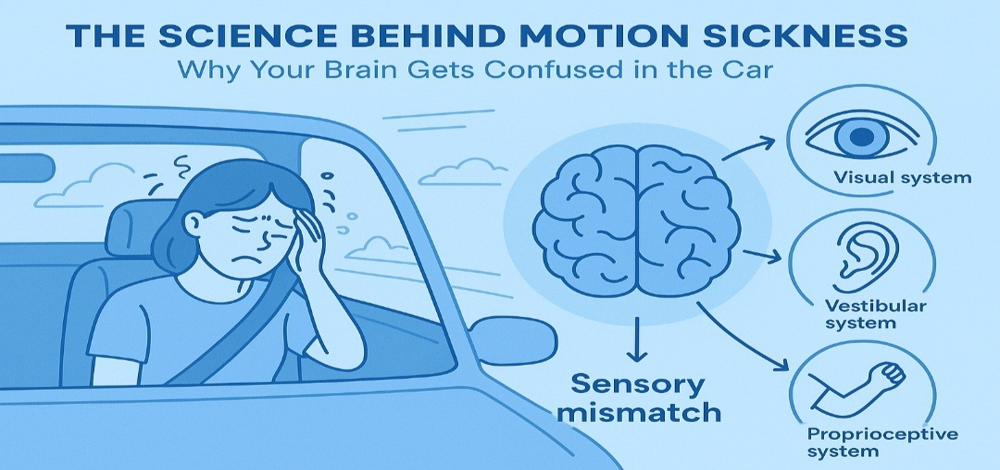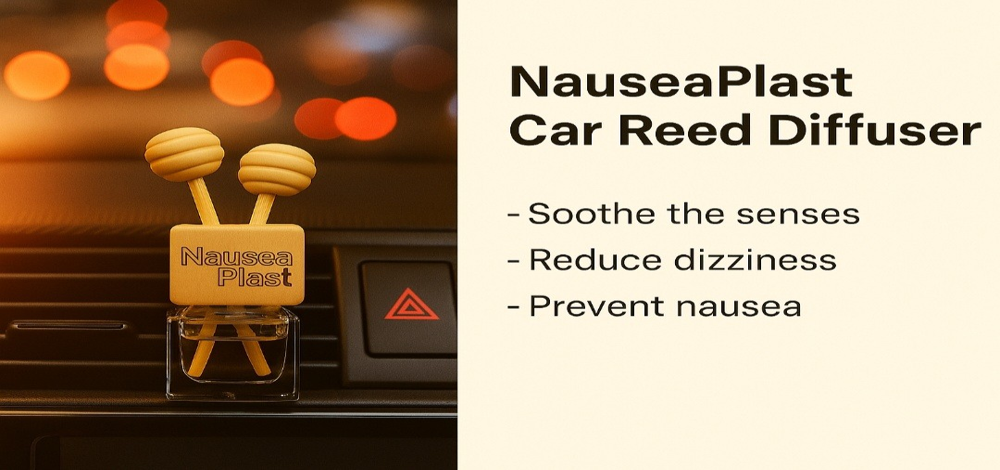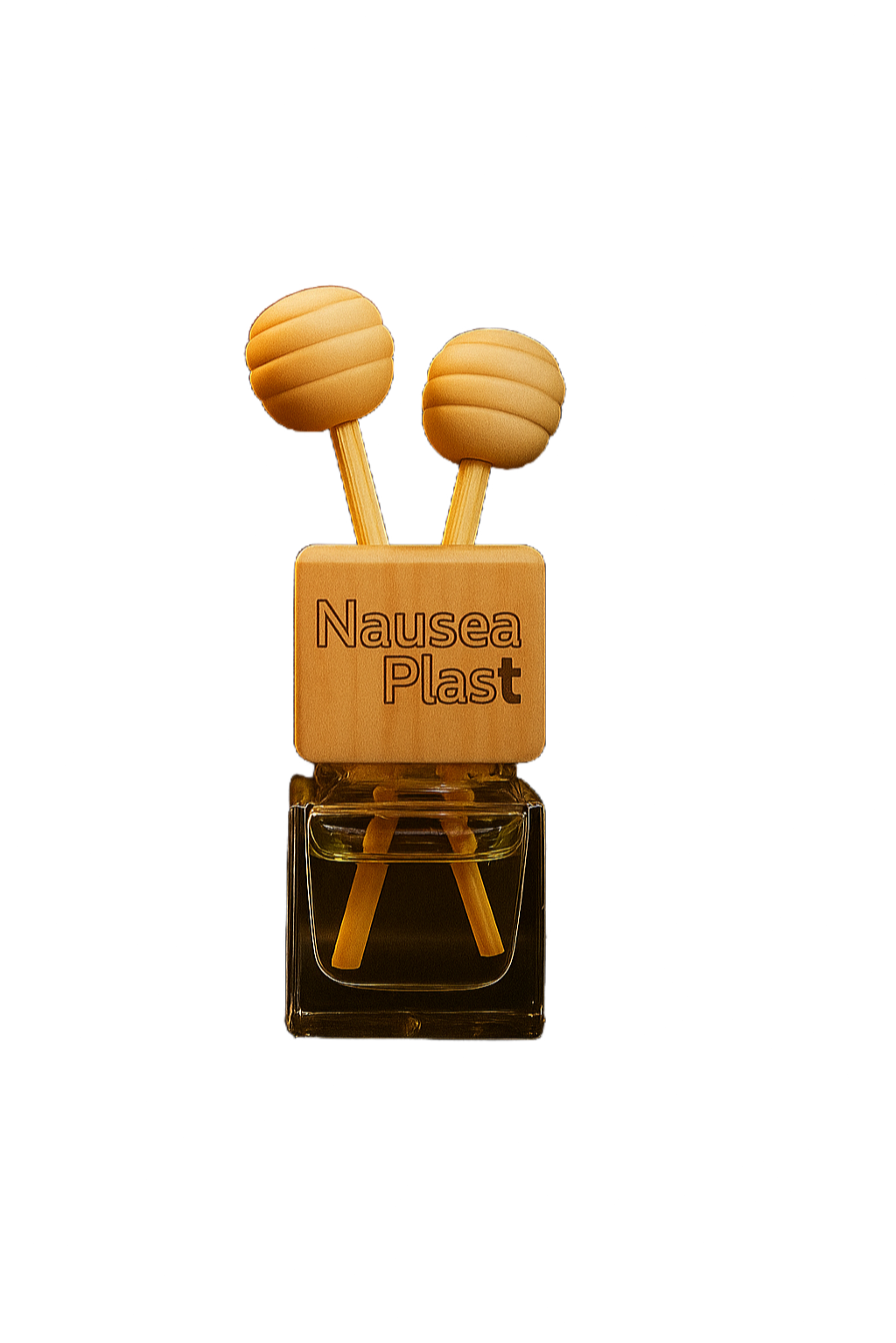Ever felt dizzy, queasy, or even nauseous while riding in a car—especially in the back seat or while reading? You're not alone. Motion sickness affects millions of people worldwide, and it can make even the shortest trip feel like a nightmare. But what actually causes this uncomfortable sensation?
Let's explore the fascinating science behind motion sickness and why your brain gets confused when you're in a moving vehicle.

What Is Motion Sickness?
Motion sickness is a condition that occurs when there's a disconnect between what your eyes see and what your inner ear senses. It's a form of sensory conflict, and it can happen in cars, boats, planes, or even virtual reality games.
The Brain's Balancing Act
Your body relies on three main systems to maintain balance and spatial orientation:
- Visual system (your eyes)
- Vestibular system (your inner ear)
- Proprioceptive system (your muscles and joints)
Here's how it works:
- Your inner ear detects motion and changes in position through fluid-filled canals.
- Your eyes send signals about the movement you see.
- Your muscles and joints provide feedback about body position.
- When all these systems agree, your brain knows where your body is and how it's moving. But in a moving car, this balance can be thrown off.
Why Your Brain Gets Confused in a Car
Imagine you're sitting in the back seat of a car, reading a book.
Your eyes see a stationary page.
Your inner ear feels the car accelerating, turning, and stopping.
Your muscles sense you're sitting still.
Your brain receives mixed messages: 'I'm moving!' says the inner ear. 'I'm not moving!' say the eyes. This sensory mismatch causes confusion in the brain's balance center—leading to the symptoms of motion sickness.
This is also why drivers are less likely to feel sick—they're visually engaged with the road and aware of the vehicle's movement, so the brain receives more consistent signals.
Who's More Likely to Get Motion Sickness?
- Children aged 2-12
- Women (especially during pregnancy or menstruation)
- People with migraines
- Those traveling on winding or bumpy roads
- Individuals with a family history of motion sickness
Tips to Prevent Motion Sickness in the Car
- Sit in the front seat: Gives a clearer view and aligns sensory input.
- Look outside the window: Focus on a fixed point in the distance.
- Avoid reading or screen time: Reduces sensory mismatch.
- Keep the air fresh: Ventilation and cool air help relieve symptoms.
- Use acupressure bands: Like the NauseaPlast Band for natural relief.
- Eat light before the trip and stay hydrated.
- Try ginger or motion sickness medication if needed.
Try the NauseaPlast Car Reed Diffuser
The solution to uncomfortable, nausea-filled car rides is the NauseaPlast Car Reed Diffuser—a natural, effective remedy for motion sickness.
Unlike regular air fresheners, NauseaPlast is infused with a blend of herbal extracts specifically chosen to:
- Soothe the senses
- Reduce dizziness
- Prevent nausea
Just plug it into your car, and it starts working instantly—releasing a calming fragrance that transforms your journey into a relaxing and refreshing experience.
Whether you're on a short city drive or a long road trip, NauseaPlast ensures comfort with every mile.
Try NauseaPlast today and make every journey a pleasant one—naturally!

